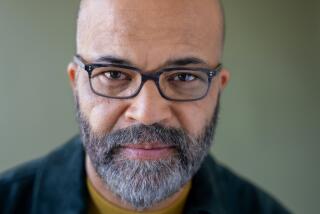Changing course put wind in the sails of ‘Captain Phillips’

For Paul Greengrass, the journey of “Captain Phillips” took him through unfamiliar waters in which he had to make himself at home.
“For some reason with this one, I took a few days to find my way,” the director says. “I remember feeling I was a bit inhibited with the material. I spoke to Chris Rouse, my editor, one night and said, ‘I’m worried the stuff I’m doing is a bit boring.’ He said, ‘Oh, I thought it was a choice!’
“So the next day I thought, ‘We’re going to go for it now,’ and I started to really let rip. Tom came up to me a few hours later, ‘That’s more like it! Now I’m getting what I thought I was going to get.’”
TIMELINE: The Academy Awards through the years
The Tom in question is Tom Hanks, who plays the title role in this story of the 2009 Somali pirate hijacking of the Maersk Alabama — and the harrowing ordeal of its kidnapped captain, Richard Phillips. Greengrass applied his trademark vérité style, handheld cinematography, shooting on location and all.
“I think the decisive moment was throwing out the dolly and tracks,” he says of the standard filmmaking equipment. “I actually had them out, the first couple of days, which I don’t normally do. I was shooting quite conventionally. It was a bit like wearing a collar and tie. Just not me.”
But some key moments arrived without that kind of thoughtful deliberation. The end scene in the medical room, for instance, when the captain’s ordeal is over — the scene the critics have hailed as Hanks’ Oscar moment — wasn’t even written that way in the script.
“The scene Billy [Ray] wrote took place later; Phillips goes up to the captain’s cabin, he’s all showered up and has been looked after, he’s given a beer and he sits down and he’s given a phone to phone home. Now what Billy wrote, he defined exactly the same scene, what [Phillips] was thinking about was the same — the summation of it, the catharsis moment. We shot that most of the day, but it never quite felt like it was it. Then by chance someone said, ‘No, he went off to the infirmary first.’
“We went down there very late in the day and grabbed the medical officer and said to her, ‘Listen, just do it as an exercise. Forget about the fact that it’s Tom Hanks.’ She looked at me like I was demented. But in a way, the blind panic that happens when you try and grab something at the end of the day can give you a sublime moment. She’s saying, ‘It’s OK, it’s going to be OK.’ Phillips is, of course, in shock and confusion as he tries to make sense of everything he’s gone through — you feel the sense of trauma and the catharsis of it all and the emotionality and the release of it all. But also, as an audience, you’re in the same place too.”
PHOTOS: Best and worst moments from 2013 Oscars
Greengrass, who has won four British Academy of Film and Television Arts Awards, cut his teeth on documentaries and has made features based on real events before (“Bloody Sunday” and “United 93” among them), so exploring an actual incident of Somali piracy wouldn’t seem out of his wheelhouse.
“It didn’t get a lot of coverage in Europe, unlike out here,” the 58-year-old Briton says. “I read [Phillips’ memoir] not knowing what the story was, and so there was a discovery about it. I loved the world of real-world piracy as opposed to Hollywood pirates. I loved these two central characters, Phillips and the pirate captain, Muse. The battle of wills. I loved that it was a contemporary, modern-day crime story but on the high seas.”
He wasn’t afraid to veer off course from the start, dumping the dual story of Phillips’ captivity and his wife’s agonized wait in the source material: Phillips’ book, “A Captain’s Duty: Somali Pirates, Navy SEALs, and Dangerous Days at Sea.” “We all felt, as we moved forward, that the film lay on the ocean.”
So as with “United 93,” which terrifyingly places viewers on that doomed Sept. 11 flight, the filmmakers trap “Captain Phillips’” audience on a fraught voyage.
“When you look back on films that have gone reasonably well, you can look back at crucial decisions that had been taken. Casting a Somali actor [the previously unknown Barkhad Abdi as Muse], that was a very important decision,” Greengrass says. He points out that the film’s biggest stunt, in which the pirates leap from their skiff to the Alabama, was initially intended to be shot in a water tank.
“We were going to shoot it in a conventional way. But when we got to Malta, I thought, ‘It’s just never going to be what it needs to be. We’ve got to find a way of solving the problems and shooting it for real, at sea. And actually boarding, for real.’
“If we had done what I’d set out to do and hadn’t changed course, it would have been entirely un-immersive. This way, you go, ‘Bloody hell, look at those guys jump!’ Amid the spray and all — it’s intensely dramatic.”
More to Read
Only good movies
Get the Indie Focus newsletter, Mark Olsen's weekly guide to the world of cinema.
You may occasionally receive promotional content from the Los Angeles Times.






